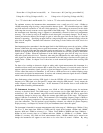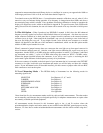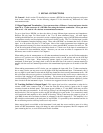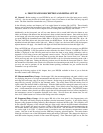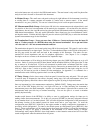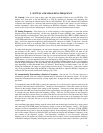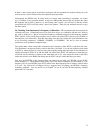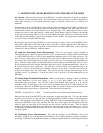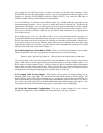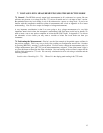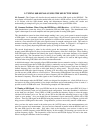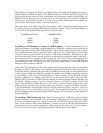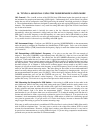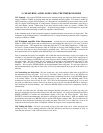13
6. POWER LEVEL MEASUREMENTS USING THE SELECTIVE MODE
6.1 General - The most basic function of the HP3586 is to measure the power of signals on telephone
lines using its selective measuring mode. This useful feature can also be used to do on the air measuring of
radio signal strength or on the bench measuring output of electronic circuits such as oscillators and
amplifiers.
For maximum accuracy the HP3586 has front panel selectable measuring ranges of 10db or 100db to look
at only a portion of its total measuring range of +20dbm down to –100dbm. The 10db range will have a
measurement resolution of .01db or better over its complete range. The 100db range will have a lower
resolution of .1db over the upper 80db of is 100db range. When tuning a signal by looking at the strength
of the signal on the analog meter it’s best to be in the 100db auto range. However, you must only use the
10db range for audio tuning of signals whose strength is under –60dbm. For high precision measurements
it’s best to always select the 10db auto range.
By fixing the range by pressing [ENTRY] we can fix the range’s location. I only use the [ENTRY] button
mode when using audio in the 10db range to tune a signal that is rapidly changing like a SSB station or
measuring rapidly varying signals, but more on that later when we tune a SSB station. For the following
section stay in the low distortion, 10db auto modes.
6.2 Setup for Performing Power Measurements - Now let’s go through a typical example of
measuring the power output of a typical electronic circuit. Assume we have a small crystal oscillator tuned
to 14.020 MHz followed by a 12db 50 ohm unterminated attenuator pad in a RF sealed enclosure. We
want to know its output power since it will be used in a test circuit to measure receiver dynamic range. We
first connect the circuit through a short 50 ohm coax line to the 50 or 75 ohm input on the termination sub
panel. Since the circuit requires 50 ohm termination we must provide this at the HP3586. On a C version
do this by pressing [50 ohm] with the shift button light off to select a 50 ohm terminated input. On an A or
B versions things are more complicated. We must add a 50 ohm resistor at the output but only if the
frequency is very low and the line to the instrument’s connector is very short. It would be best to have the
resistor in an adapter across the 75ohm input. This will now provide a 50 ohm terminated input for the
oscillator circuit. In Appendix C I show the circuit I use to provide a 50 ohm termination for my
HP3586B.
6.2 Setting Input Termination Impedance - Make sure the display is reading in dbm by confirming
the dbm annunciator on the level display is on, if it isn’t press [dbm] under units on the
measurements/entry sub panel. We still have another little problem when using an A or B versions
instrument with a 50 ohm input, it does all its power calculations based on the 75 ohm resistance it was
designed for. But since the HP3586 measures power in dbm, we can add a offset to the level measurement
to correct the data to power across a 50 ohm load. This offset can be calculated by:
OFFSET = 10 log (R1/75) = -1.76db R1 will equal 50 for our 50 ohm load termination resistor
Enter the offset by pressing [OFFSET] on the entry panel, and then enter the value, 1.76, using the number
keyboard, press [-db] for it’s sign and units, and then press [MEAS CONT] to return to the measurement
mode. Last activate the offset feature by pressing [OFFSET] on the measurement/entry panel. When we
first pressed [OFFSET] on the entry sub panel the value in its offset register will be displayed and then
when we enter our new offset it will overwrite the old offset to confirm our entry. Now our display
readings will be in dbm referenced to a 50 ohm load as long as the light on the offset button is on. Also an
O annunciator behind the dbm annunciator will turn on indicating the readings are offset by the value in
the offset register.
6.3 Performing Power Measurements - Now tune the frequency of the HP3586 to that of the
oscillator’s output by any of the earlier described methods. Once we have found the oscillator’s frequency
by hearing it’s beat tone in the SSB audio speaker, or seeing an upward deflection of the analog level meter



